Key Takeaways
1. Humans are predictably irrational, but understanding biases can improve decision-making
"Have a look, if you would, at the two tables shown in the figure below:"
We are not Econs. Humans are prone to systematic biases and errors in judgment, as demonstrated by optical illusions and behavioral economics experiments. We often rely on mental shortcuts (heuristics) that can lead us astray.
Two cognitive systems. Our brains operate using two systems:
- Automatic System: Fast, intuitive, and unconscious
- Reflective System: Slow, deliberate, and conscious
Common biases:
- Anchoring: Initial information disproportionately influences judgments
- Availability: We overestimate the likelihood of easily recalled events
- Loss aversion: Losses hurt more than equivalent gains feel good
- Status quo bias: We tend to stick with default options
- Overconfidence: Most people believe they are above average in various domains
Understanding these biases allows us to design interventions that help people make better decisions while preserving freedom of choice.
2. Choice architecture shapes decisions, often without people realizing it
"A choice architect has the responsibility for organizing the context in which people make decisions."
Inevitable influence. Every decision is presented within some context that influences the choice. There is no such thing as neutral design.
Key principles of good choice architecture:
- Make it easy: Reduce barriers to desired behaviors
- Understand mappings: Help people grasp how choices lead to outcomes
- Defaults matter: Choose them wisely as many will stick with them
- Give feedback: Help people learn from their choices
- Expect error: Design for humans who will make mistakes
- Structure complex choices: Break down and organize difficult decisions
Choice architects in government, business, healthcare, and other domains can use these principles to guide people toward better decisions without restricting freedom.
3. Defaults are powerful nudges that can be leveraged for positive outcomes
"For reasons we have discussed, many people will take whatever option requires the least effort, or the path of least resistance."
Inertia is powerful. People tend to stick with preset options due to status quo bias, so default choices have an outsized influence on outcomes.
Examples of effective defaults:
- Automatic enrollment in retirement savings plans
- Opt-out organ donation policies
- Double-sided printing as the default printer setting
- Healthy food placement in cafeterias
Designing good defaults:
- Choose defaults that most people would select if they gave it careful thought
- Make opting out easy to preserve freedom of choice
- Consider the interests of all stakeholders, not just the choice architect
- Be transparent about default options and the reasoning behind them
Well-designed defaults can dramatically improve outcomes in areas like savings, health, and environmental protection without restricting freedom.
4. Social influences strongly shape behavior and can be harnessed for good
"Humans are easily nudged by other Humans."
We follow the herd. People are strongly influenced by the perceived behaviors and beliefs of others, often more than we realize.
Forms of social influence:
- Information: What others do signals what's best or normal
- Peer pressure: We want to fit in and avoid disapproval
- Social proof: We look to others to determine appropriate behavior
Leveraging social norms:
- Highlight positive behaviors of the majority (e.g., "9 out of 10 people pay their taxes on time")
- Use descriptive norms (what people actually do) and injunctive norms (what people approve of)
- Make desirable behaviors more visible
- Beware of inadvertently normalizing negative behaviors
Understanding and harnessing social influences can lead to large-scale behavior change in areas like energy conservation, tax compliance, and healthy behaviors.
5. Making good choices easier and bad choices harder is an effective nudging strategy
"If you want to encourage some action or activity, Make It Easy."
Reduce friction. Removing small barriers to good behaviors can have a big impact. Conversely, adding friction to undesirable choices can discourage them.
Strategies for making it easy:
- Simplify processes and forms
- Use clear, simple language
- Provide checklists and reminders
- Make good options more salient and accessible
- Automate positive behaviors (e.g., automatic savings deposits)
Examples:
- One-click ordering for online shopping
- Pre-filled tax forms
- Opt-out organ donation
- Placing healthier foods at eye level in cafeterias
By thoughtfully designing choice environments, we can guide people toward better decisions without restricting freedom.
6. Smart disclosure and reducing sludge empower better consumer decisions
"To create organized commodity markets, such as those that exist for oil, soybeans, or cotton, it is also necessary to have standardized units of quality."
Information is power. Providing clear, standardized, and easily accessible information helps consumers make better choices.
Smart disclosure principles:
- Make information machine-readable and standardized
- Focus on key decision factors
- Allow easy comparisons between options
- Provide personalized information when possible
Reducing sludge:
- Eliminate unnecessary paperwork and bureaucracy
- Simplify complex processes
- Make opting out of undesirable arrangements easy
- Avoid hidden fees and shrouded attributes
By improving disclosure and reducing friction, we can create markets that work better for consumers and reward companies that offer genuine value.
7. Libertarian paternalism preserves freedom while guiding better choices
"Libertarian paternalism is a relatively weak, soft, and nonintrusive type of paternalism, because choices are not blocked, fenced off, or significantly burdened."
Nudge, don't shove. We can help people make better choices without restricting freedom by changing the choice architecture.
Key principles:
- Always preserve freedom of choice
- Make opting out easy and low-cost
- Be transparent about nudges and their rationale
- Aim to help people achieve their own goals, not impose values
Addressing critiques:
- Not manipulative if transparent and easily avoided
- Can complement, not replace, education and incentives
- Nudges often necessary; some choice architecture is inevitable
- Empowers individuals by making complex choices manageable
Libertarian paternalism offers a middle ground between laissez-faire approaches and heavy-handed regulations, helping people while preserving autonomy.
8. Nudges can help address major societal issues like retirement savings and climate change
"For the sake of simplicity, our focus here is on reducing emissions, but unfortunately it is inevitable that the world will have to find a way to deal with the effects of climate change over time."
Tackling big problems. While nudges alone can't solve major challenges, they can be a powerful part of comprehensive strategies.
Retirement savings nudges:
- Automatic enrollment in 401(k) plans
- Escalating contribution rates over time
- Well-designed default investment options
- Simplifying and standardizing plan options
Climate change nudges:
- Green energy as the default option
- Energy use feedback and social comparisons
- Simplified carbon footprint information
- Making sustainable choices more salient and convenient
Combining approaches:
- Use nudges alongside traditional policy tools (taxes, regulations, etc.)
- Leverage behavioral insights to improve the effectiveness of other policies
- Address both individual and institutional decision-making
- Continuously test and refine interventions
While nudges aren't a silver bullet, they offer low-cost, freedom-preserving ways to complement other efforts in addressing complex societal challenges.
Last updated:
FAQ
What's Nudge: Improving Decisions about Money, Health, and the Environment about?
- Behavioral Economics Focus: The book delves into how behavioral economics can enhance decision-making in areas like money, health, and the environment. It highlights the impact of cognitive biases on human choices.
- Nudging Concept: Introduces "nudging," which involves subtle changes in choice presentation to encourage decisions that align with individuals' self-interest without limiting their freedom.
- Libertarian Paternalism: Advocates for designing choices that guide people towards better decisions while preserving their autonomy, a concept known as "libertarian paternalism."
- Choice Architecture: Emphasizes the structuring of choices to influence behavior positively, demonstrating how small changes can lead to significant improvements in outcomes.
Why should I read Nudge?
- Practical Applications: Offers insights applicable to everyday life, from personal finance to public policy, helping readers make better choices and influence others positively.
- Influential Ideas: The book has shaped public policy and business practices globally, providing a deeper understanding of behavioral economics' societal impact.
- Engaging Writing Style: Thaler and Sunstein present complex ideas accessibly, using real-world examples to illustrate principles, making the book enjoyable and informative.
What are the key takeaways of Nudge?
- Nudges Matter: Small changes in choice presentation can significantly alter behavior, such as placing healthier food at eye level to encourage better eating habits.
- Defaults Influence Decisions: Highlights the power of default options, showing that people often stick with defaults, which can promote beneficial behaviors like saving for retirement.
- Awareness of Sludge: Introduces "sludge," unnecessary obstacles that hinder good decision-making, and suggests reducing sludge to improve overall welfare.
What is libertarian paternalism in Nudge?
- Definition: Libertarian paternalism is about influencing behavior to improve lives while allowing freedom of choice, helping individuals make better decisions without restricting options.
- Practical Examples: Examples include automatic enrollment in retirement plans, which increase participation while allowing opt-out, balancing guidance with autonomy.
- Balancing Freedom and Guidance: Emphasizes creating environments where people can thrive without feeling coerced, respecting individual autonomy while guiding towards better choices.
How does choice architecture work in Nudge?
- Designing Choices: Involves structuring choices to positively influence decisions, using defaults, option arrangement, and information framing.
- Impact of Context: Context significantly affects outcomes; for example, food display in cafeterias can influence eating habits.
- Examples of Effective Architecture: Includes reminders and prompts to encourage desired behaviors, helping individuals make better decisions with less effort.
What is a nudge according to Nudge?
- Definition of a Nudge: A nudge is a choice architecture aspect that predictably alters behavior without forbidding options or changing economic incentives.
- Examples of Nudges: Includes placing healthier food at eye level or using reminders for retirement savings, guiding better choices without restricting freedom.
- Nudges vs. Coercion: Emphasizes that nudges are gentle influences, not coercive measures like taxes or bans, aiming to positively influence behavior.
How do biases affect decision-making in Nudge?
- Present Bias: Discusses how individuals prioritize immediate rewards over long-term benefits, leading to poor financial decisions like under-saving for retirement.
- Loss Aversion: Highlights the preference to avoid losses over acquiring equivalent gains, resulting in cautious behavior like avoiding stock market investments.
- Cognitive Overload: Too many choices can overwhelm individuals, leading to decision paralysis; simplifying choices can encourage better decision-making.
What is the "Save More Tomorrow" program mentioned in Nudge?
- Automatic Increases: A strategy to help employees increase retirement savings by committing to save a portion of future salary increases, easing the saving process.
- Behavioral Insights: Leverages the tendency to avoid loss by saving from future raises, reducing financial strain and increasing savings rates.
- Successful Outcomes: Demonstrates significant savings rate increases among participants, showcasing the effectiveness of nudging in financial decision-making.
How does Nudge address the issue of organ donation?
- Presumed Consent vs. Explicit Consent: Discusses systems like presumed consent (automatic donor unless opted out) and explicit consent (active registration required).
- Prompted Choice: Advocates for a system encouraging individuals to declare preferences at key moments, like driver's license applications, increasing donor registration.
- Family Involvement: Emphasizes involving families in decision-making to respect potential donors' wishes, leading to higher organ donation rates.
What are some real-world applications of the ideas in Nudge?
- Public Policy: Governments use nudges to improve public health, tax compliance, and environmental behaviors, demonstrating behavioral insights' effectiveness in policy-making.
- Business Practices: Companies enhance customer experiences with nudges, like simplifying purchasing processes, leading to increased satisfaction and loyalty.
- Personal Finance: Individuals apply Nudge principles to financial decisions, like automatic savings plans, improving financial well-being and reducing stress.
What is sludge and how does it affect decision-making in Nudge?
- Definition of Sludge: Refers to unnecessary obstacles or friction hindering beneficial outcomes, like complicated forms or lengthy processes.
- Impact on Choices: Sludge deters good decisions, such as applying for benefits, and reducing it can improve access to important resources.
- Examples of Sludge: Includes complicated tax forms or difficult subscription cancellations, leading to frustration and disengagement from beneficial programs.
What are the best quotes from Nudge and what do they mean?
- “Nudge helps us understand our weaknesses...”: Highlights the focus on recognizing behavioral biases and strategies to overcome them, emphasizing decision-making processes.
- “If you want to encourage some behavior...”: Encapsulates the principle of removing barriers to facilitate better choices, stressing the importance of understanding obstacles.
- “Everything matters.”: Reflects the belief that small details in choice architecture significantly impact behavior, underscoring thoughtful design's importance in influencing decisions.
Review Summary
Nudge receives mixed reviews, with praise for its core ideas on behavioral economics and choice architecture. Many find it insightful and applicable to various fields, particularly public policy. Critics note its American-centric examples and dense writing style. Some reviewers appreciate the book's bipartisan approach and practical suggestions, while others find certain proposals controversial. Overall, readers value the book's exploration of how subtle changes in choice presentation can significantly impact decision-making, though some struggle with its length and detail.
Similar Books
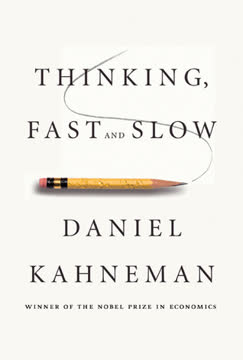
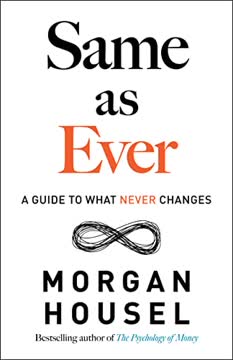
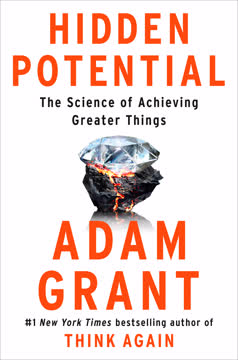

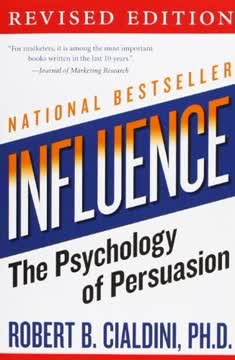

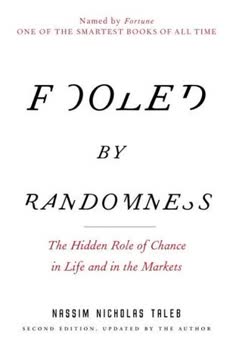
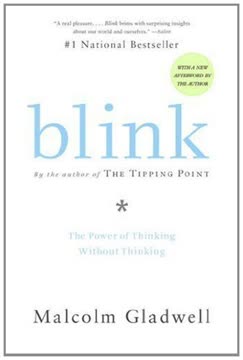


Download PDF
Download EPUB
.epub digital book format is ideal for reading ebooks on phones, tablets, and e-readers.





